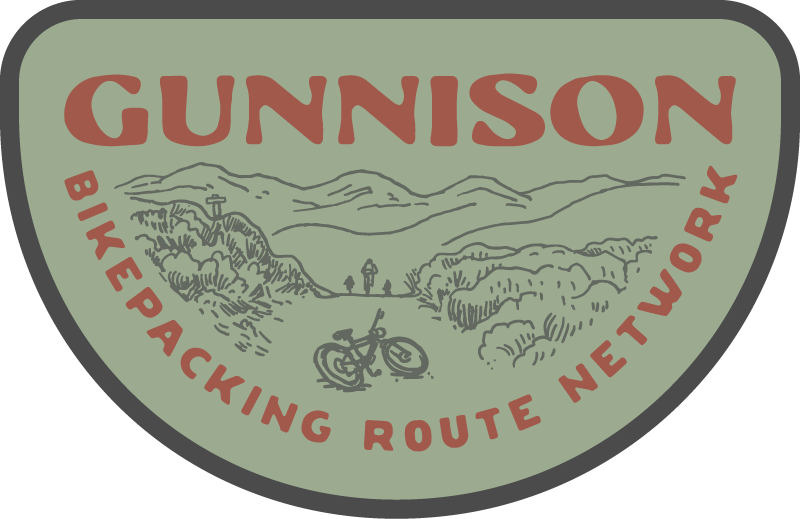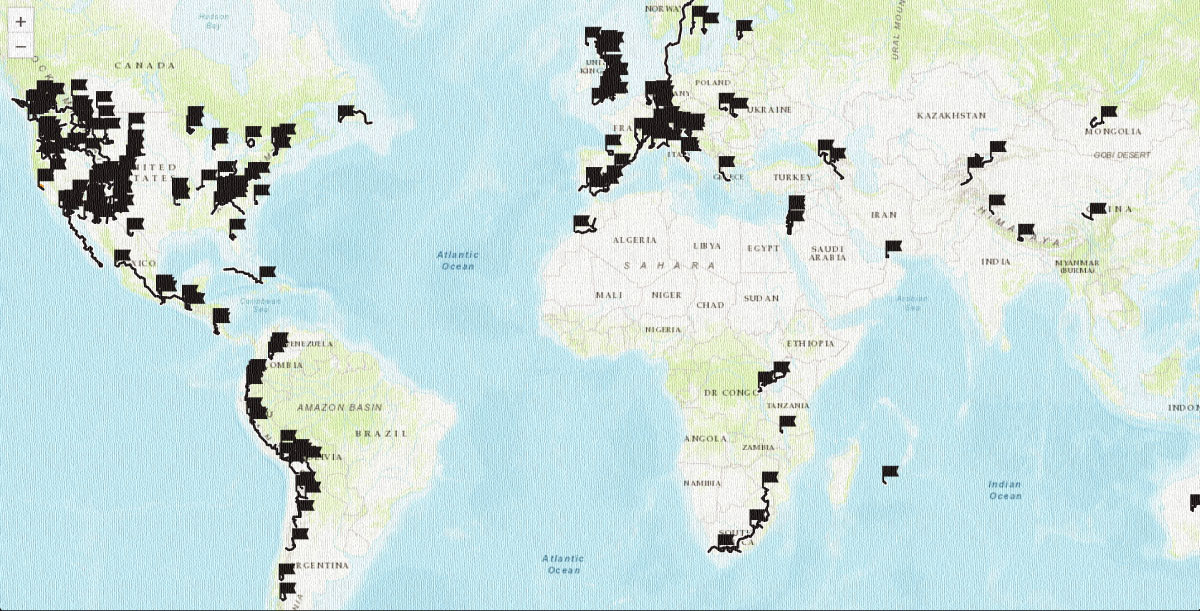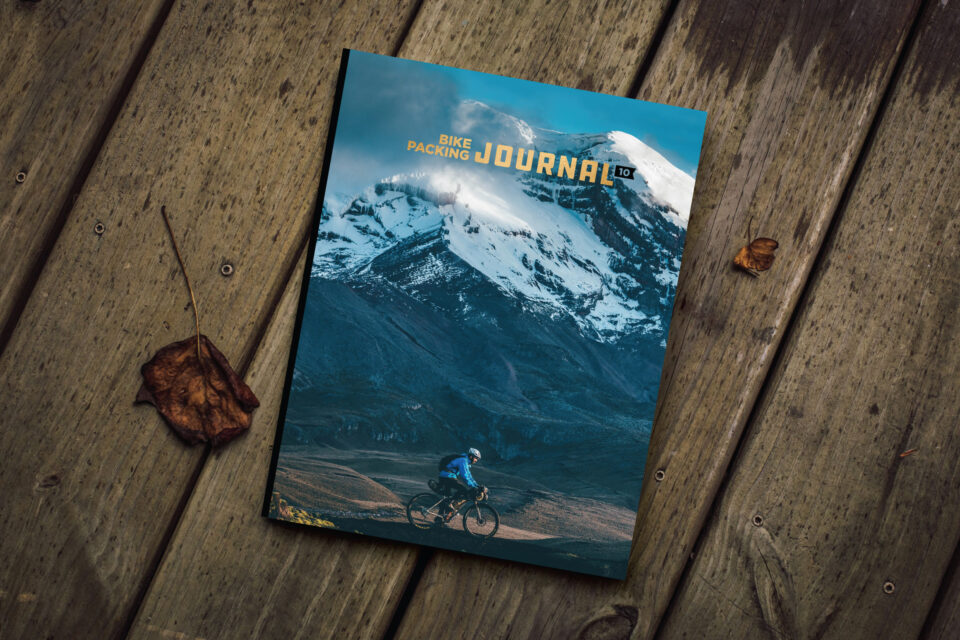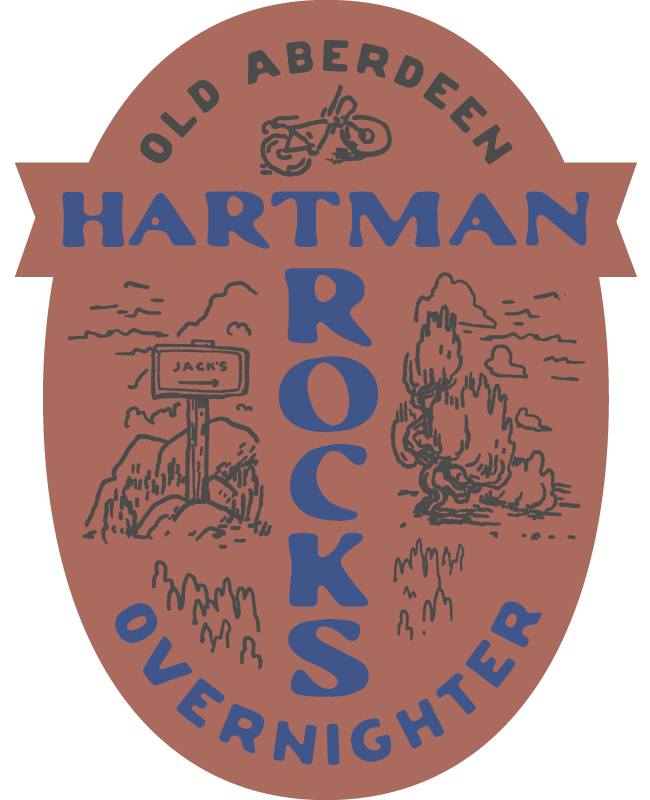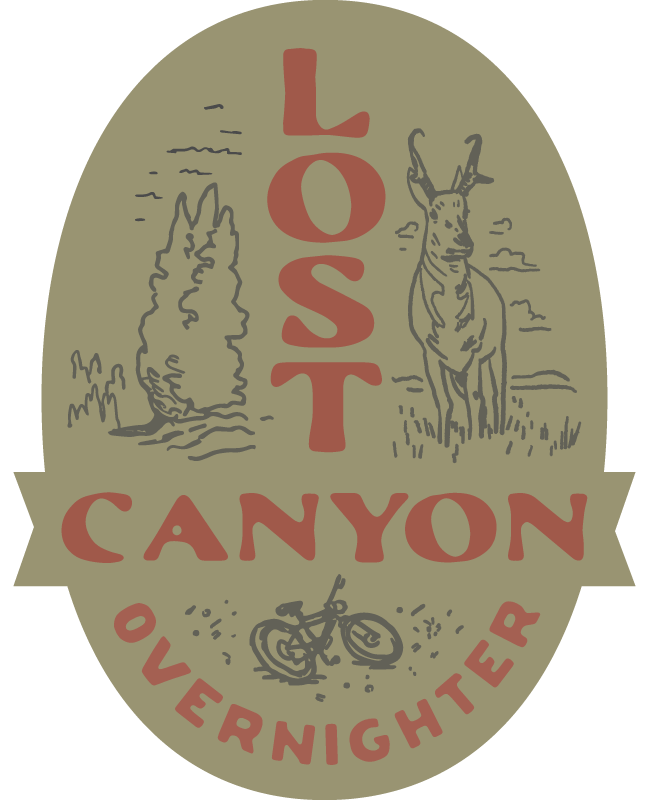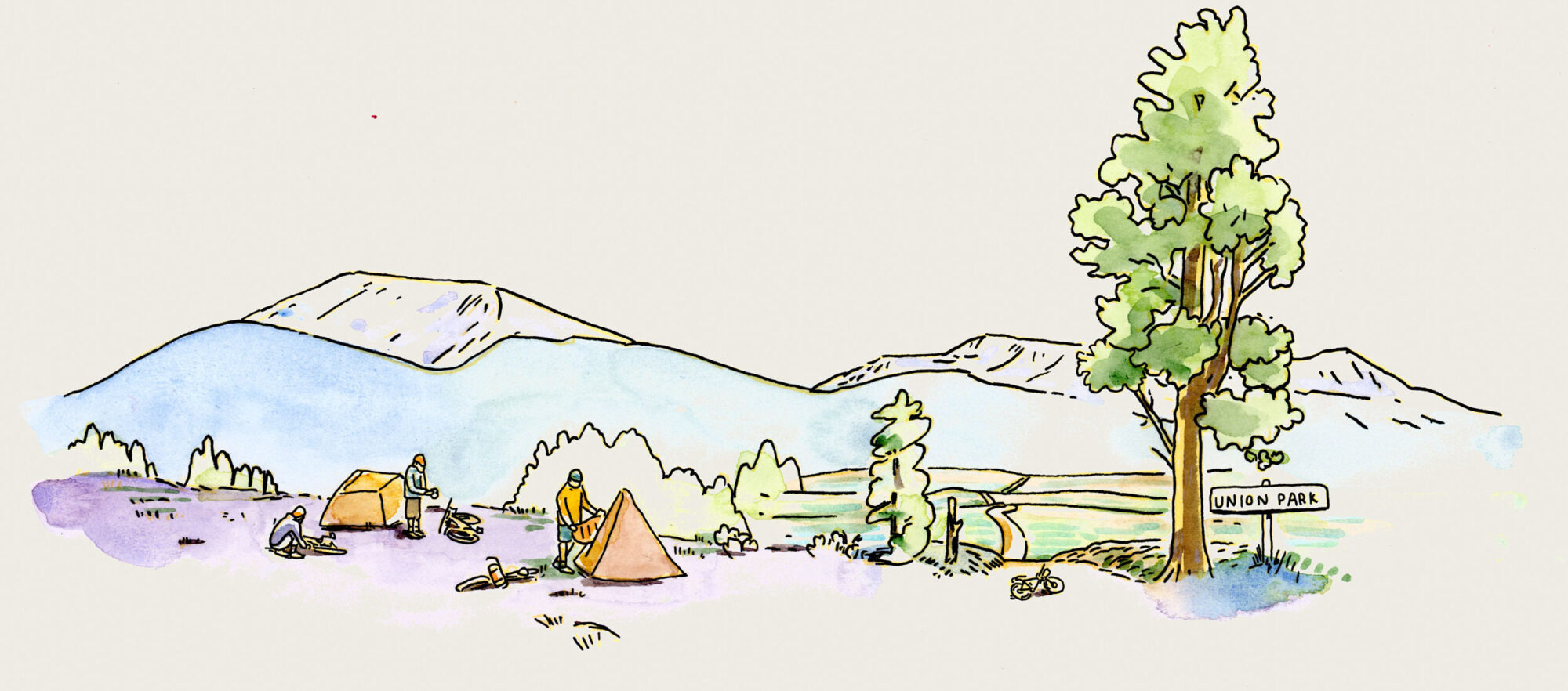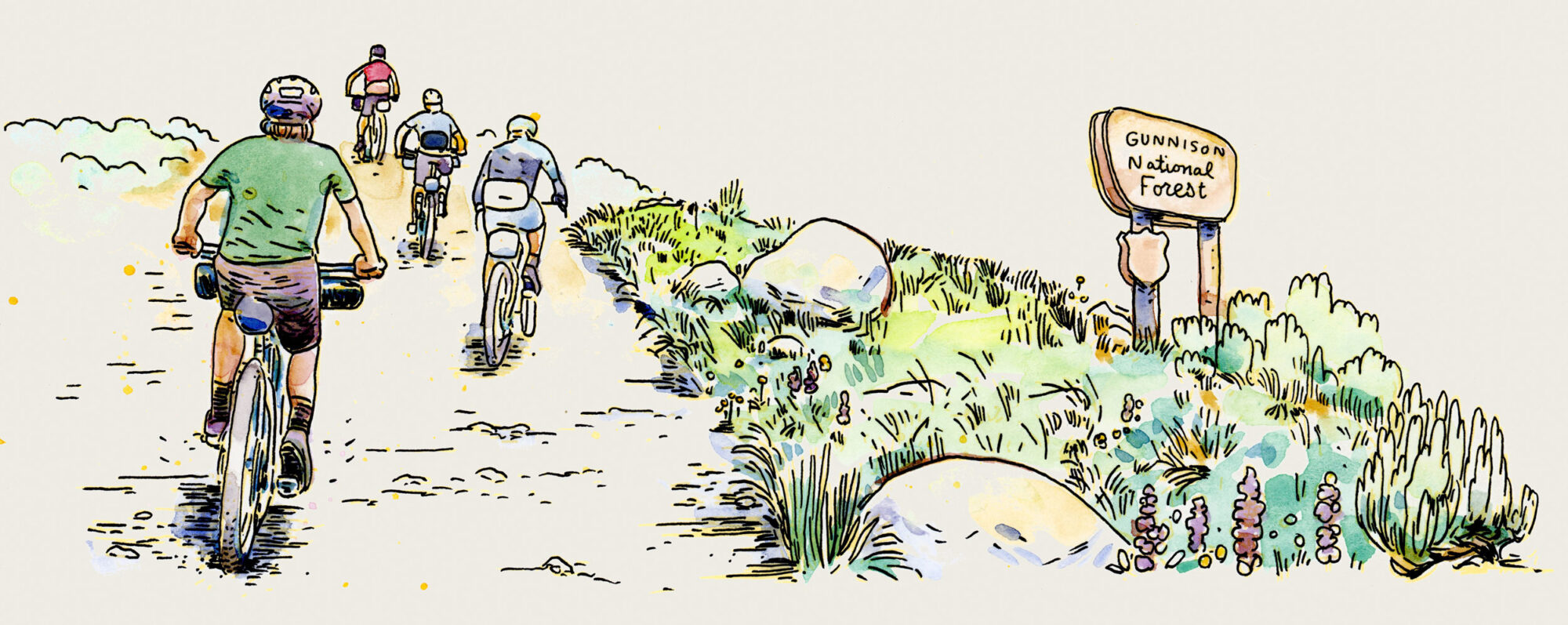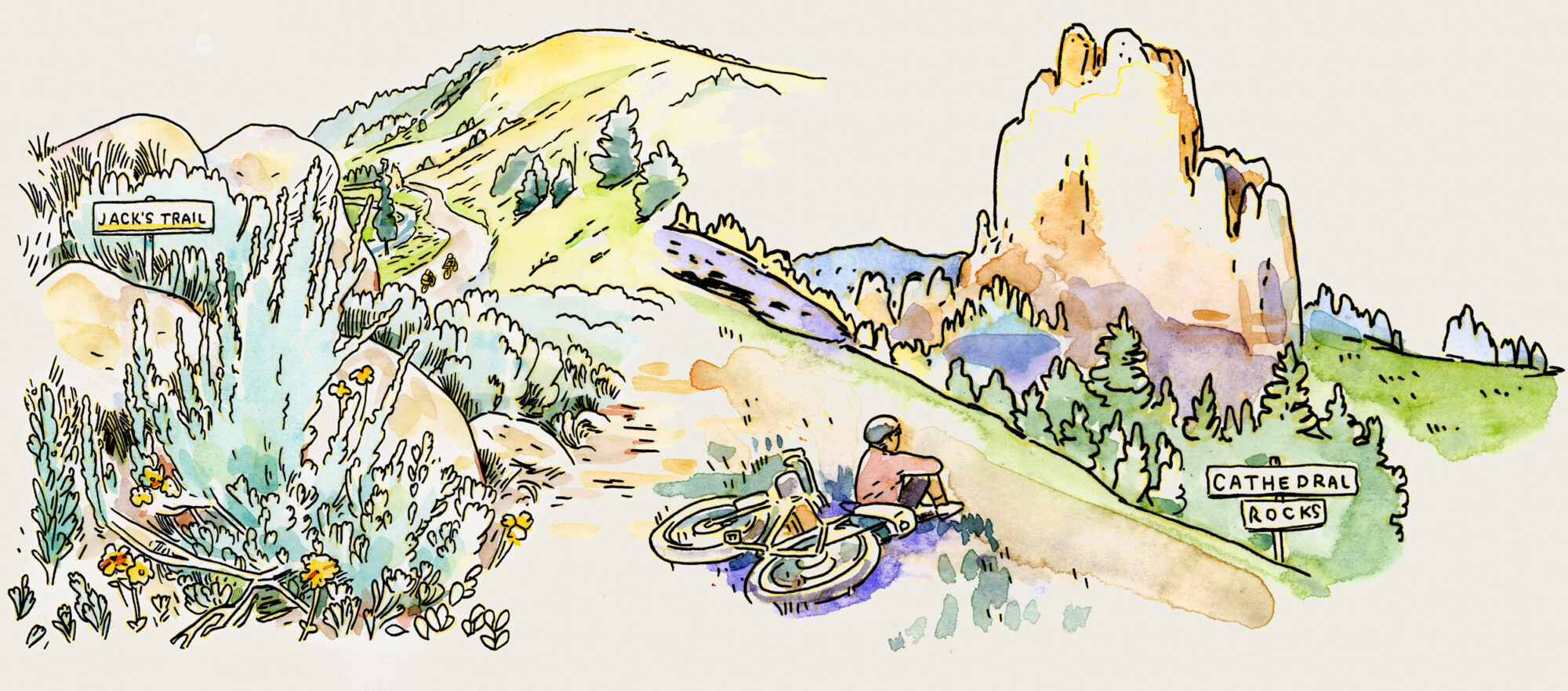Gunnison County has a rich history of mining, agriculture, recreation, and education. It is also the ancestral land of the Indigenous Ute people, who were forcibly removed from the area in the 1880s. It’s the combination of the various histories of land use in Gunnison County that makes it so unique. Never did a single user group gain a major control of the direction the county took. Mining and ranching still exist in the area, and recreation has grown from a single ski resort made of old mining equipment to infrastructure that supports huge numbers of skiers, mountain bikers, fly fishers, paddlers, and more. Western State University has also grown from one of the original small teacher-training schools in the state to a much larger institution, constantly bringing new people and ideas to the county.
Ancestral Lands
Gunnison County is the ancestral land of the Ute people. Living in the area during the summer months before heading to lower elevations in the winter, two bands of the tribe occupied the lands of modern-day Gunnison County. The Parianuches, or “elk people,” lived north of the Gunnison River, and the Tabeguaches, who were later called the Uncompahgres, occupied the rest of the area as they hunted big game in the area. The Spanish were the first to start the removal of Indigenous people from their land, bringing disease during their explorations in the 16th century.
As minerals were discovered in the area, the Indigenous people of the area were first moved onto a reservation occupying most of the land in Colorado west of the continental divide during the Treaty of 1868. As part of a plan to increase Ute reliance on the US government and to attempt to strip them of their culture, the Office of Indian Affairs set up the Los Pinos Ute Indian Agency, a distribution center for goods and products to sustain the Ute people as their traditional way of life was disrupted. As pressure for access to the area increased from mining, they were eventually all moved to the Uintah-Ouray Reservation in Utah in the early 1880s.
Currently, the Ute tribe is the largest landowner in Gunnison County, having several large tracts of land on Pine Creek Mesa.
History of Gunnison County
Part of what makes present-day Gunnison so unique is its varied
history, which has always included mining, ranching, agriculture, and tourism. Over the years, no single economic driver was ever able to push the others completely out of the picture, creating the vibrant mix of cultures that still exists today. Due to its geographic isolation and the difficulty of getting products in and out of the area, both in the past and somewhat in the present, Gunnison has been able to develop differently and largely independently of many other mountain towns in the state. This has created a unique culture, both in the city and in the bike culture of the area.
Mining
While Gunnison was first established in 1874 as part of explorations for a cross-country railroad route, it was mining that really brought people to the area. Unlike many settlements that only had gold and silver mines, Gunnison County also had coal mines. Many of these were discovered and developed in the 1880s. The silver in the area, first discovered in 1872, brought a large wave of miners to the area, as did the gold mining, which started to take off around 1979. When the silver panic hit mines throughout the region and caused the closure of many of them, Gunnison was able to remain a viable mining town through its coal mines. Gunnison County still has an operating coal mine in Somerset.
While gold and silver mining is long in the past, Mount Emmons, overlooking Crested Butte, has been at the center of a mining debate stretching back to 1977. The mountain, commonly called Red Lady, overlooks the town of Crested Butte and is a popular recreation area both in the summer and winter. It also lies at the headwaters of the Gunnison River. But with the third largest discovered molybdenum deposit in the world, several mining companies have tried to develop the area. But pushback from the community, combined with constantly fluctuating prices for the element, which is used to strengthen steel, has stalled all efforts thus far to establish a mine. Negotiations are currently underway to permanently protect the area from mining.
Ranching
The high altitude and long and cold winters of Gunnison County make many types of agriculture infeasible. After the last Utes were removed from the area in 1879, many settlers moved in and found that cattle ranching was the best option for survival, seeing that only potatoes and hay that grew well. With the success of hay and good summer grazing options, the cows took over. Cattle ranching is ongoing in the county today, both on public and private land. Gunnison’s Cattlemen’s Days is a celebration of the continued influence of ranching in the area.
Recreation
Skiing has always been a popular pastime in the Gunnison Valley. What started as a form of transportation quickly turned into a type of recreation in the 1890s. The Pioneer Ski Area in Cement Creek was established using an old tramway from a mine to carry skiers up the mountain. The lift had 80 chairs, which were also built from old mining materials.
In 1961, Crested Butte Mountain Resort opened with a single T-bar. While early years saw the ski area struggle to stay open, most likely due to its remote location, it eventually turned into the world-class ski resort that it is today. It maintains a reputation for steep terrain and lots of snow, and its geographical isolation from the other ski resorts in the state helps it keep its quirky character.
Western Colorado University
Chartered in 1901 and opened as a teacher-training school in 1911, the modern-day Western Colorado University is one of the oldest schools in the state. While it’s a smaller school with only about 3,000 students, it offers a wide array of majors and has a large influence on the community. Many of the mountain bikers who’ve been movers and shakers in the bike culture in Gunnison County came for school. Dave Weins, former professional mountain biker and founder of Gunnison Trails, came to the school as a kayaker and found mountain biking. Dave Mo, owner of Rock ‘n’ Roll sports and local bike legend, came to Western to study as a motorcycle rider who eventually found bikes. Both stayed and have had a heavy influence on the bike world both in Gunnison County and beyond. The presence of Western Colorado University, with a strong mountain bike program and outdoor focus, keeps young riders arriving in the area, and many of them never leave. Those who do take a little bit of the Gunnison Valley bike culture with them.
Gunnison Landscape
Nearly 82% of the land in Gunnison County is public. Split up as 80% federally controlled land and 2% state-controlled land, a variety of agencies care for the diverse array of landscapes, including the BLM, Forest Service, National Park Service, and the Bureau of Reclamation.
The northern half of Gunnison County is dominated by mountain ranges, including the Elks and the Sawatch. These mountain ranges have peaks reaching well over 13,000 feet, and the Sawatch have several peaks over the 14,000-foot mark. In most of Colorado, treeline hovers around 11,500 feet, meaning there’s plenty of alpine in these mountains. The flowers in the area tend to be low to the ground and incredibly hearty.
The wooded areas of Gunnison County are generally a mix between aspen and pine forests, the ratio depending on both aspect and elevation. The aspens turn a stunning yellow in the fall and provide ample photographic opportunities for visitors. At lower elevations, mostly in the southern half of the county, the trees fall away again and are replaced by sage. This habitat is home to the threatened Gunnison sage-grouse that lives in nine fragmented areas throughout Colorado and Utah.
In addition to the land-based areas, Gunnison County is home to the headwaters of the Gunnison River. The second-largest tributary to the Colorado River, the Gunnison is a critical water source for all of the West. It’s the only watershed that butts up against the western edge of the continental divide that doesn’t pump water over to the more populous eastern side. While attempts were made in the 1980s and ‘90s to dam the Taylor River to create a cross-divide water system, the project was eventually abandoned after local protest. A dam on the Gunnison River, just west of Gunnison, creates Blue Mesa, the largest body of water in Colorado. In addition to being the home of rainbow, brown, and Lake trout, the reservoir also has kokanee salmon that migrate upstream into the Taylor and Slate Rivers in the fall. Many of the waterways in Gunnison County provide world-class fishing opportunities.
Flora and Fauna
With a wide range of elevations in the county, from low sagelands to high alpine tundras, a variety of ecosystems exist within a short distance of each other. The dramatic and ever-changing landscape allows major shifts in flora, fauna, and scenery within just a few miles of riding.
Flora
While Crested Butte is the self-proclaimed Wildflower Capital of Colorado, spring and summer blooms are abundant throughout the entirety of Gunnison County. The wildflowers generally start at lower altitudes in June and slowly work their way up in elevation through the end of the summer. Different times of the year can bring entirely distinct sets of flowers.
Starting early in the summer, a whole host of wildflowers dot the lower sagelands surrounding Gunnison, including Indian paintbrush, larkspur, yarrow, and sunflowers. As the summer progresses, at higher elevations, the quintessential bright yellow mule’s ears start to dominate the landscape. Intricate elephant head flowers grow near high-elevation water sources, and giant green gentians start to sprout out higher than everything else. The bright purple fireweed also makes an appearance in mid-July as the “summer countdown plant.” As the summer progresses, the purple blooms move gradually up the stem of the plant, and when the highest of the flowers have bloomed, summer is officially over.
In the alpine, where summer comes the latest and ends the earliest, you’ll find the purple sky pilot, Armeria, and Hall’s penstemon dotting these wide open areas starting late June and into July and August. These plants live close to the ground to help them survive the incredibly harsh environments.
Fauna
Gunnison County is home to a large number of land-, water-, and air-based animals, and the various elevations play host to many ecosystems. Some animals, like the Gunnison sage-grouse, spend all of their time in one specific location, while others, like elk, will exist in a variety of habitats depending on the time of year. Gunnison hosts a vibrant fishing and hunting culture with its variety of game, and some areas, such as the Almont Triangle, are closed during periods of the year to protect the animals.
Above treeline, you’ll find both megafauna and smaller animals. Elk often spend their days near or above treeline in the summer before moving back into the shelter of the trees in the evening. Squeaky marmots, otherwise known as “whistle pigs,” will pose on rocks in the sun, while the tiny pika also makes its home up high. In the sky, golden eagles and red-tailed hawks can be spotted, while in the bushes, it’s common to see white-crowned sparrows and juncos.
In the forested regions, mule deer are abundant, and a variety of chipmunks and ground squirrels scamper throughout the trees. In marshy areas, moose munch on willows. It’s not unusual to see mountain bluebirds, robins, and northern flickers flying around.
The sage also has its own ecosystem of animals. The largest of the animals in the sage is the pronghorn. The fastest land animal in North America, they evolved to outrun the prehistoric cheetah that used to roam the plains. Now, their biggest threat is human encroachment on their habitat, as they tend to struggle with getting over fences. As mentioned, the sage is also home to the threatened Gunnison sage-grouse, and extensive efforts have been taken to help the survival of the species.
Gunnison Sage-Grouse Conservation
The Gunnison sage-grouse is a threatened species of bird that makes its home in the sage oceans of the Gunnison Basin. While smaller populations are found in parts of southeastern Utah, the Gunnison area is the largest remaining habitat for these birds. Their population decline is mostly due to habitat loss, though changes in the climate have also affected their ability to breed and survive. They have elaborate courtship rituals where the male birds perform intricate dances in their leks, which are clearings in the sage, in order to attract a female. The males will perform for several hours a day, mostly in the morning and the evening, in hopes of finding a partner, and the birds often use the same lek for many years or even generations.
To help protect the breeding grounds of the Gunnison sage-grouse, much of the public lands around Gunnison are closed to all motorized use from March 15 to May 15, and non-motorized users are encouraged to avoid any area that has sage before 9 a.m. in order to not disturb the mating ritual of the birds. The Signal Peak Trails outside of Gunnison are closed to all users between March 15 and May 15.
